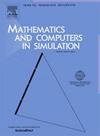可逆自适应混沌多图像隐私保护方案,用于各种图像的高效批量加密
IF 4.4
2区 数学
Q1 COMPUTER SCIENCE, INTERDISCIPLINARY APPLICATIONS
引用次数: 0
摘要
针对传统固定结构加密算法的局限性,提出了一种基于混沌映射的多图像加密方案。该方案允许用户输入不同大小和类型的多个图像,然后将其加密为存储在云平台上的单个类似噪声的图像。首先,构造了一个具有良好随机性的三维超混沌忆阻器映射。通过提出的基于SHA-384哈希算法的密钥初始值生成机制,将用户提供的密钥转换为初始值,生成用于加密的混沌序列。随后,对多个输入图像进行预处理并拼接成一个大的明文图像,经过位级自适应域扩散和混沌索引-之字形复合置乱,生成最终的密文图像。该算法引入自适应加密参数,根据输入图像控制遍历矩阵和规则矩阵的大小。通过将大的矩阵运算转化为多个较小的矩阵运算,动态调整加密过程,优化计算资源,从而提高算法的灵活性和效率。最后,使用多组测试映像进行安全性分析,显示出跨所有指标的出色性能。值得注意的是,该方案可以在25.8 秒内加密50张图像,显示出显着的效率。本文章由计算机程序翻译,如有差异,请以英文原文为准。
Reversible adaptive chaotic multi-image privacy protection scheme for efficient batch encryption of various images
Addressing the limitations of traditional encryption algorithms with fixed structures, this paper proposes a multi-image encryption scheme based on chaotic map. This scheme allows users to input multiple images of varying sizes and types, which are then encrypted into a single noise-like image stored on a cloud platform. First, a three-dimensional hyperchaotic memristor map with excellent randomness is constructed. Through the proposed key-initial value generation mechanism based on the SHA-384 hash algorithm, the user’s provided key is converted into an initial value to generate the chaotic sequence used for encryption. Subsequently, multiple input images are pre-processed and concatenated into a large plaintext image, which undergoes bit-level adaptive domain diffusion and chaotic index-Zigzag composite scrambling to produce the final ciphertext image. The algorithm introduces adaptive encryption parameter that control the size of the traversal matrix and the rule matrix based on the input images. By transforming large matrix operations into multiple smaller matrix operations, the encryption process is dynamically adjusted and computational resources are optimized, thereby enhancing both the flexibility and efficiency of the algorithm. Finally, security analyses with multiple groups of test images show excellent performance across all metrics. Notably, the scheme can encrypt 50 images in 25.8 seconds, demonstrating remarkable efficiency.
求助全文
通过发布文献求助,成功后即可免费获取论文全文。
去求助
来源期刊

Mathematics and Computers in Simulation
数学-计算机:跨学科应用
CiteScore
8.90
自引率
4.30%
发文量
335
审稿时长
54 days
期刊介绍:
The aim of the journal is to provide an international forum for the dissemination of up-to-date information in the fields of the mathematics and computers, in particular (but not exclusively) as they apply to the dynamics of systems, their simulation and scientific computation in general. Published material ranges from short, concise research papers to more general tutorial articles.
Mathematics and Computers in Simulation, published monthly, is the official organ of IMACS, the International Association for Mathematics and Computers in Simulation (Formerly AICA). This Association, founded in 1955 and legally incorporated in 1956 is a member of FIACC (the Five International Associations Coordinating Committee), together with IFIP, IFAV, IFORS and IMEKO.
Topics covered by the journal include mathematical tools in:
•The foundations of systems modelling
•Numerical analysis and the development of algorithms for simulation
They also include considerations about computer hardware for simulation and about special software and compilers.
The journal also publishes articles concerned with specific applications of modelling and simulation in science and engineering, with relevant applied mathematics, the general philosophy of systems simulation, and their impact on disciplinary and interdisciplinary research.
The journal includes a Book Review section -- and a "News on IMACS" section that contains a Calendar of future Conferences/Events and other information about the Association.
 求助内容:
求助内容: 应助结果提醒方式:
应助结果提醒方式:


